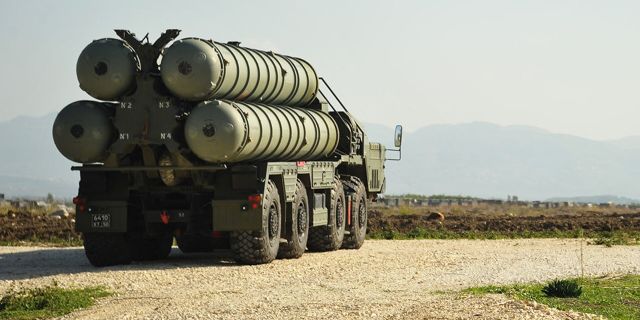The S-300 air defense system opened warning fire on Israel's F-16 in Syria
Russian S-300 systems are in service and reliably protect the airspace of Syria, writes MWM. In the last two months alone, they have fired on Israeli F-16 fighters twice. These systems remain a serious threat to the Israeli Air Force, the author notes.
On July 26, the Russian S-300PMU-2 air defense systems acquired by Syria fired one surface-to-air missile at a flight of F-16 fighters that Israel bought from the United States after they invaded the country's airspace. This is the second time that Syrian S-300s have launched their missiles in the Middle East outside of military exercises. The first of them took place two months ago, on May 13, and also with the participation of Israeli aircraft. SAM missiles were fired along ballistic trajectories and were not aimed at any aircraft.
Previously, Syria was supposed to deploy the S-300 back in 2013, but Israeli pressure on Russia forced the latter to cancel this deal, despite the fact that training of Syrian personnel had already begun by that time. The Kremlin reversed its decision and installed the systems only in October 2019 after blaming Israel for the death of the Russian Air Force Il-20 aircraft and its entire crew in an incident when Israeli F-16s allegedly used it as a cover from Syrian air defense fire. However, the S-300PMU-2 has been operated by Russian personnel for many years and did not fire at enemy aircraft even during fierce fighting in early 2020, when Turkey made massive illegal incursions into Syrian airspace to provide air support to Turkish militants on the ground.
The S-300PMU-2 first entered service in 1997, and those in service with Syria were the last copies exported abroad. Long since discontinued, they were withdrawn from active Russian units, which, in turn, received new, more powerful S-400 systems. The use of the system is due to the fact that Russia seeks to support the security of Syria from Western, Turkish and Israeli threats, a noticeable preliminary signal of which was the joint exercises of Russian and Syrian fighter jets held in January, simulating the protection of Syrian airspace. The S-300PMU-2, integrated with a number of cheaper air defense systems supplied by Russia in recent years, is the most powerful air defense system in service with Syria, along with the recently acquired MiG-29SMT fighters, which are reportedly armed with R-77-1 air-to-air missiles.
The S-300PMU-2 is valued for its sufficiently long range of 250 km, the presence in the arsenal of several classes of missiles providing a multi-level defensive network, as well as for its high mobility and radar armament, which makes it a particularly serious threat to Israeli and Turkish F-16 units. These fighters first entered service in 1978, but still remain the "workhorse" of the Air Forces of both countries. Turkey has made attempts to modernize those in its service with new avionics, sensors and weapons, while Israel has begun phasing out this class of fighters and decommissioning entire squadrons of these machines.

